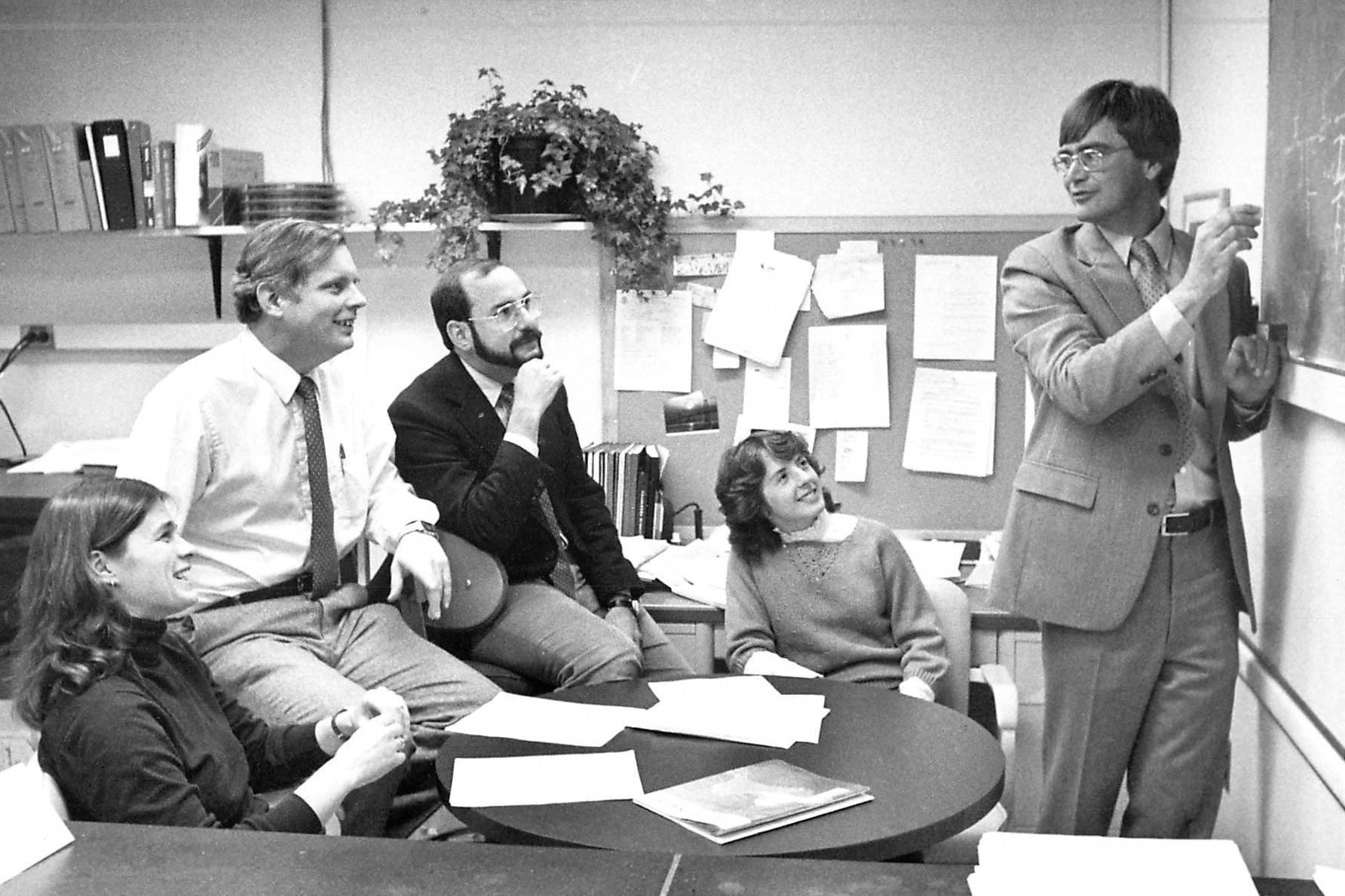Despite increasing competition for federal research dollars, the Alcohol Research Center (ARC) at UConn Health endures well into its fifth decade with an unprecedented continuation of funding from the National Institutes of Health (NIH).
A five-year, $7.5 million award from the NIH’s National Institute of Alcohol Abuse and Alcoholism (NIAAA) announced this month further extends the program, which was initiated at UConn Health’s Department of Psychiatry in 1978. It’s the eighth successful competitive renewal, continuing funding for years 41 through 45. The program’s longevity is unmatched, both within the University and among all NIAAA-funded alcohol centers.
“You’re absolutely out of your mind,” says Victor Hesselbrock, vice chair of psychiatry and ARC principal investigator, when asked what he would have said if someone told him in 1978 that this new program would last with continuous funding for more than 40 years. “I was thinking at best we would be one and done. It was a new concept coming out of NIAAA.”
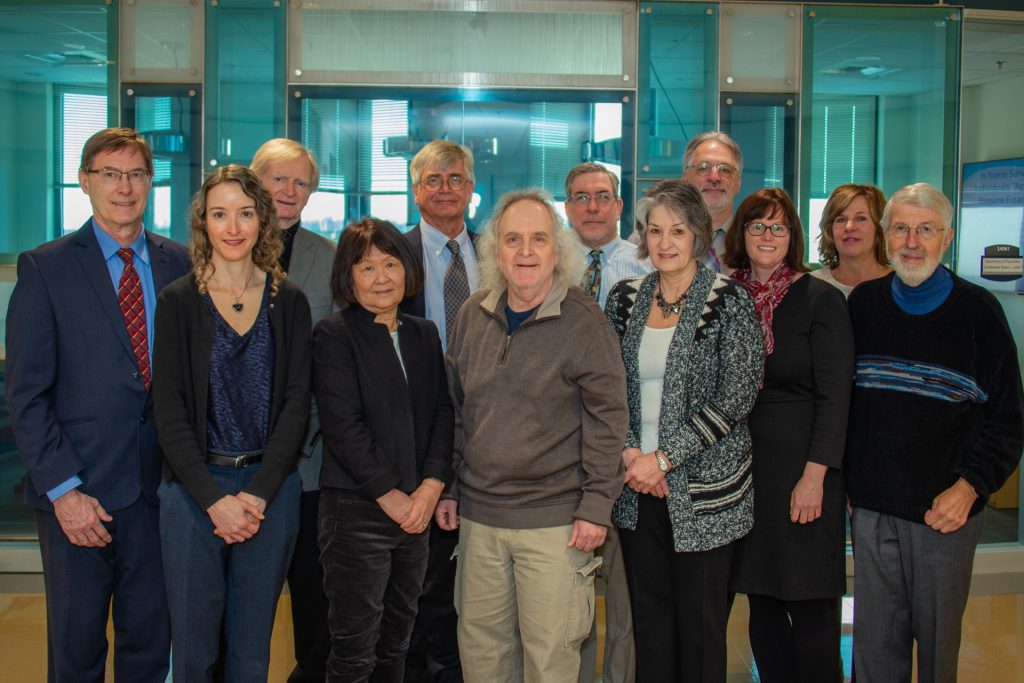
At first, the NIAAA awarded grants to nine institutions to establish alcohol research centers. Hesselbrock arrived just months after UConn Health opened the center, which would outlast all of the other original alcohol research centers and become one of the longest-running and most prolific federally funded research centers of any kind in the U.S.
“This is an incredible achievement in federally funded research,” says Dr. Bruce Liang, dean of the UConn School of Medicine. “The Alcohol Research Center’s remarkable longevity not only is a tribute to the scientists led by Dr. Hesselbrock at the UConn School of Medicine, it’s also an affirmation of their many contributions to the medical community’s growing understanding of addiction.”
The grant to establish UConn’s Alcohol Research Center arrived under the leadership of Dr. Roger Meyer, former chair of psychiatry. Posed with the same hypothetical, Meyer said, “Impossible. I could never, ever have said that it would last 40 years.”
Hesselbrock estimates – conservatively, and not adjusted for inflation – that the funding awarded to the Alcohol Research Center totals about $67.5 million, with at least an additional $60 million in spin-off or related educational grants and funding for projects.
“Receiving NIH support for over 40 years is a testament to the ARC’s leadership and its investigators, who had to prove for every five-year funding cycle that they could reinvent the goals of the center to undertake cutting-edge research in alcohol-use disorders,” says Dr. David Steffens, chair of psychiatry since 2012. “Dr. Hesselbrock and his team’s success in this regard is truly remarkable.”
Over its 41 years, the Alcohol Research Center has earned an elite reputation in the worldwide addiction science community. It has broken ground in the areas of neuroscience, medication therapies, behavioral interventions in the treatment of alcohol use disorders, the genetics of addiction, as well as gender, ethnic, and environmental influences on the development of addictive disorders.
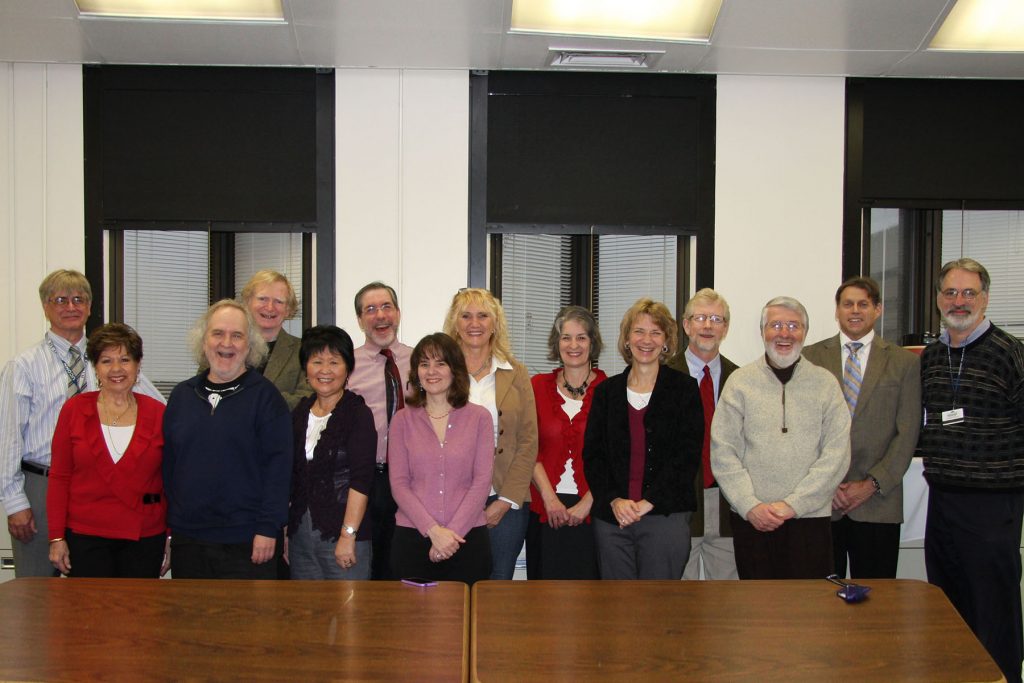
“What made us successful,” Hesselbrock says, “and what continues to make us successful, is that we brought in people who were willing to learn, work hard, and were interested in having a productive career.
“Each investigator in our group has really gone out of their way to obtain other grants that are associated with what we do in the center. They’re visible nationally and internationally at scientific meetings and we publish like crazy. At the same time, we have also been very good at working with other colleagues in the field. We are on a number of scientific advisory boards for other addiction centers around the country, hold editorship positions on the major addiction journals, and serve on federal and non-federal study sections in the U.S. and abroad.”
The Grant That Got It Started
The ancestry of UConn’s Alcohol Research Center can be traced back to MacLean Hospital in the Boston area, a psychiatric affiliate of Harvard Medical School. Meyer was leading a multidisciplinary study of opiate addiction when UConn recruited him in January 1977 to lead the Department of Psychiatry.
“John Dempsey Hospital had opened an alcohol treatment center on the third floor,” Meyer says. “When I looked at that, I thought that this would be a fantastic environment in which to conduct research to advance the treatment of patients with alcoholism. Serendipity smiled on us.”
That spring, Meyer learned of plans by the federal government to start funding alcohol research centers and thought UConn would be a good candidate. To shape the grant application, Meyer enlisted the help of a MacLean colleague, Thomas Babor, who had just received a career development award from the NIAAA.
“Tom and I put together the outline of a center grant focusing on clinical alcohol research,” Meyer says. “Mind you, no faculty member in the Department of Psychiatry had any grant-supported research, and no one in the college of medicine had any research experience in alcoholism or drug abuse. While I was certainly experienced in clinical research on opioid and cannabis dependence, alcoholism was new territory for me.”
The original alcohol research grants did not include UConn. But the NIAAA opened a second round of funding and Meyer, with Babor’s help, secured a grant for UConn that would begin a historic run.
Building the Program
With the grant came new challenges. Not so different from today, the initial award notice was considerably less than the amount requested.
“The program announcement promised $500,000 a year for direct costs over five years, but was funded at only $200,000 a year for both direct and indirect costs,” Meyer says. “In spite of the draconian cut, we were still supposed to do what we had proposed in our application.”
The centerpiece of the grant was a typology study of alcoholism, designed to collect detailed information about 100 patients.
“Our goal was to identify predictors of treatment outcome based upon patient ‘types’,” Meyer says. “We proposed to follow each patient yearly over a three-year period post-treatment, documenting sobriety or relapse to heavy drinking.”
While Meyer and Babor designed the project, they needed someone to direct it. As Meyer prepared to leave for Washington University in St. Louis to attend the first conference of the nine alcohol research centers, he called renowned psychiatric epidemiologist Lee Robins, who was on the faculty there.
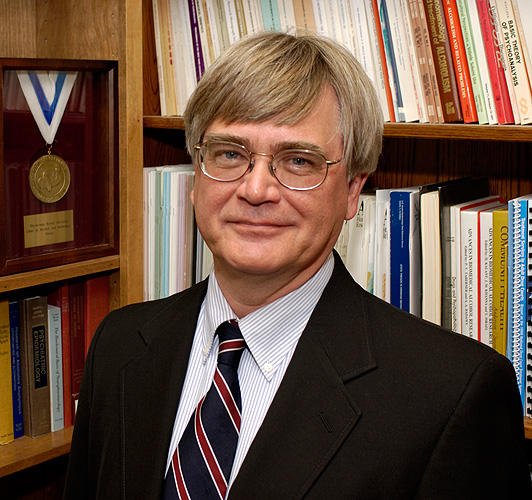
“I asked her if she had anyone in her shop that she’d recommend,” Meyer said. “Without a pause, she said, ‘I would recommend Victor Hesselbrock.’”
Hesselbrock and his wife, Michie, were junior faculty members at Washington University – he was in child and adolescent psychiatry, and she was in general psychiatry. Both were trained in social work, but neither focused on alcoholism or addiction. Meyer met with the Hesselbrocks and “was tremendously impressed,” Meyer says.
From that meeting, Victor Hesselbrock recalls, “I said, ‘I don’t know anything about alcoholism, other than I like wine and beer. He said, ‘You’ll learn.’ And I did.”
Meyer hired both Victor and Michie Hesselbrock on to the typology project and center grant.
“It turned out to be an absolute blessing,” Meyer says. “Victor and Michie came into the Center and turned it into gold. Michie, who had tremendous experience working with Lee Robins, basically shaped up what we called the typology of alcoholism. We were able to follow 320 people with alcohol dependence over the course of three years. Michie did amazingly with the administrative and scholarly tasks associated with that study.”
Branching Out
The early years also saw affiliations with the Institute of Living in Hartford, Blue Hills Hospital, also in Hartford, and the Newington Veterans Affairs Hospital, a UConn Health affiliate at that time.
“By 1982, when it came time for renewal for the four centers that started when we did, the only one that was re-funded was UConn,” Meyer says. “And that was outstanding.”
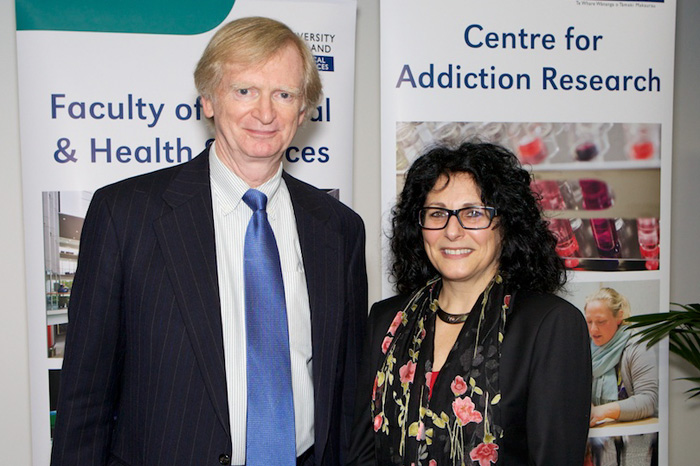
The circle expanded downstate. Meyer brokered a partnership with the psychiatry department at Yale School of Medicine, and, by 1985, Babor had joined the UConn Health faculty as an associate scientific director of the ARC.
“Yale had a tremendously talented group on the addiction side but nothing in alcohol, and we didn’t have very much funding for addiction but we had a lot in alcohol,” Meyer says. “By this time we were getting other grants.”
Under this arrangement, the UConn ARC would help fund alcohol initiatives at Yale, and Yale would help fund drug addiction initiatives at UConn. The collaboration was quite successful, and Yale eventually developed its own Alcohol Research Center. Collaborations between the two groups continue today.
“We really had a critical mass of people working together between Yale and UConn, and we had these young people coming along – investigators who were doing other things but we brought them to alcohol research,” Meyer says.
National Collaborations
When the NIAAA launched the Collaborative Study on the Genetics of Alcoholism (COGA) Study in the late 1980s, it asked UConn’s Alcohol Research Center to be part of the core group. Hesselbrock recalls how the technology used to identify genes was evolving and was brought into UConn’s ARC.
“We started taking blood so we could take DNA, and we established cell lines,” he says. “When we started off, we were going to do 600 patients and their families. We now have 2,300 family pedigrees containing over 17,500 people. We’re now able to study four generations of affected families.”
One of the COGA national project’s principal investigators, Hesselbrock says the study has identified more than 30 genes associated with vulnerability for developing alcohol-related problems.
“When we started, we didn’t think we’d have more than one round of funding to study the genetics of alcoholism,” Hesselbrock says. “We weren’t so sure there were genes for alcoholism. We were absolutely wrong.
“We started off doing an early DNA profiling technique, which is something high school kids do now, but it was highly technical in 1988. Now we’re doing whole genome sequencing.”
When we started, … we weren’t so sure there were genes for alcoholism. We were absolutely wrong. — Victor Hesselbrock
The COGA study has also had multiple renewals and was just renewed by NIAAA for years 31 through 35.
Dr. Jonathan Covault, who joined the UConn psychiatry faculty in 1997 and has been part of the Alcohol Research Center since 2002, notes that the role of genetics in alcoholism is turning out to be much more complicated than people might have envisioned.
“What’s been learned is, there are no major-effect genes for alcoholism – or depression, bipolar disorder, or schizophrenia,” Covault says. “In all these diseases, the genetic contribution results from many genes, each making a small contribution to the individual’s risk.”
UConn’s ARC was also involved in the NIAAA’s Project MATCH, a large multi-site collaborative study of three different types of psychotherapeutic treatment of alcoholism, which was established in 1989. Babor was the coordinator and the site director was Dr. Henry Kranzler, a former UConn Health psychiatry resident and research fellow who joined the faculty in 1986. Data from Project MATCH found an association between a patient’s genetic makeup and a treatment outcome.
“Furthermore, the finding indicated which of the three treatments was optimal,” Covault says, referring to a study published in Alcoholism: Clinical and Experimental Research in 2007. “That was one of the first studies showing that an individual’s genotype might relate to treatment outcomes. Importantly, in this case, it wasn’t even a medical treatment but a psychotherapy treatment.”
In 1996, Nancy Petry joined the faculty from the University of Vermont, where she had completed a postdoctoral fellowship in clinical addiction research funded by the National Institute on Drug Abuse (NIDA).
Petry introduced and advanced a revolutionary behavioral treatment methodology called contingency management, which has been applied across various different addictive disorders, ranging from alcoholism and substance abuse to smoking to internet gaming and most notably, gambling.
“Nancy Petry’s work in contingency management is without a doubt among the best that’s been done in terms of behavioral treatments for addictions,” Hesselbrock says.
Data from Petry’s NIH-sponsored clinical trials led to the adoption of contingency management to treat addiction disorders across the country, including at Veterans Administration Medical Centers. Following several years of illness, Petry died in July 2018.
Notable Contributions
Until the late 1970s, the only medication for chronic alcoholism was disulfiram (trade name Antabuse), which was federally approved in 1949. Work by the UConn ARC led to the Food and Drug Administration approval of additional drugs, including naltrexone (Revia or Vivitrol) and acamprosate (Campral).
Additionally, off-label use of FDA-approved drugs is becoming more common across clinical medicine, including in psychiatry and addiction treatment.
“A good example is topiramate, which is an anticonvulsant,” Hesselbrock says. “However, at a different dose it is now used to treat problem drinking. Dr. Kranzler was a major player in that research area.”
Currently, the ARC is studying the use of neurosteroids commonly used to treat benign prostatic hyperplasia (BPH or enlarged prostate) to reduce drinking, and Hesselbrock reports promising initial findings in humans following Covault’s work with an animal model.
Kranzler remains on the UConn ARC’s scientific advisory board and still collaborates on projects started more than a decade ago.
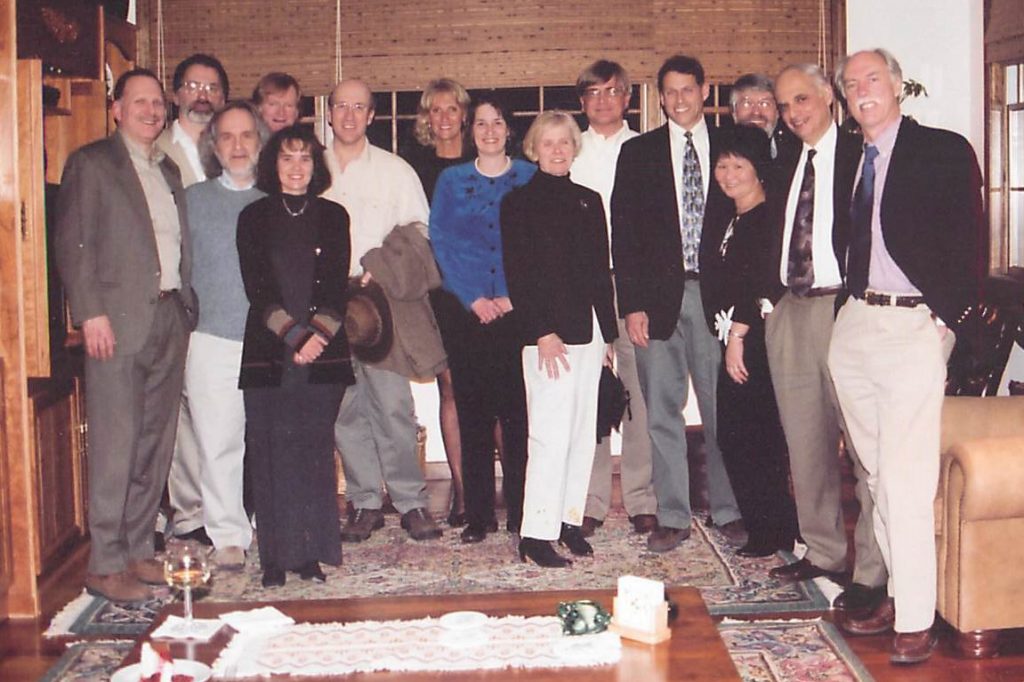
“What has made the center so successful in my view is the focus on a limited number of themes, namely, the causes and treatment of alcohol dependence,” Kranzler says. “I would have been surprised that it would have endured for so long, because NIH-funded centers rarely survive past 15 years.”
Several other UConn ARC investigators have made major contributions.
“In the behavioral therapy area, Ron Kadden was very instrumental in developing a standardized Alcoholics Anonymous-type of a treatment program that is commonly used in many treatment settings,” Hesselbrock says. “We also need to note Tom Babor’s screening and brief intervention methods (SBIRT) have been approved by the Centers for Medicare and Medicaid Services (CMS) for screening and brief intervention in emergency rooms, crossing into other nonaddiction medical specialties.”
Howard Tennen is a pioneer in the research on the impact of daily events on drinking patterns and their relationship to the development of alcoholism. Stress and changes in mood are key features of daily processes related to drinking, and Tennen came up with many of the daily event assessment methods used today.
Lance Bauer, who joined the ARC in 1987, bringing his interests in brain functioning and cognition into the mix of studies, focused on clinical investigation and addiction vulnerability. Bauer’s studies have shown that measures of brain function can predict treatment outcomes among adults with alcohol or drug abuse problems. His work also has shown that adolescents varying in genetic risk for future alcoholism show differences in brain function.
Apart from the longstanding commitment to research is an equally longstanding commitment to research training.
“For the past 37 years, the ARC has been the recipient of an institutional National Research Service Award from NIH,” Bauer says. “Initially developed by Dr. Hesselbrock in 1980, this NRSA award has supported the training of more than 50 postdoctoral fellows over this period, including me. The program has been remarkably successful. For example, all of the fellows trained over the past 10 years have graduated into faculty or faculty-equivalent positions.”
The NIH last year renewed the funding of this training program for another five years, under the direction of Bauer and Sheila Alessi, who arrived at UConn Health in 2002.
What Made It Work
The protagonists say it was a combination of the initial vision and the faculty’s creativity and ambition that helped UConn’s Alcohol Research Center take shape and thrive.
Ultimately it was the interdisciplinary mix of investigators in a creative environment that has kept the Center innovating from one grant cycle to the next. — Thomas Babor
“The ARC was successful because of the model Dr. Meyer developed to integrate research, clinical programs, and education under the same umbrella of an academic department,” says Babor.
Early on, the ARC established authorship rules to help younger faculty grow their reputations through appropriate authorship credit.
“We had this whole new team of people with incredible new ideas and direction,” Meyer says. “This tradition started, making sure that young people got the visibility to get promoted and to get grants in a collegial environment.”
Adds Babor, “Being in an academic medical center certainly helped, but ultimately it was the interdisciplinary mix of investigators in a creative environment that has kept the Center innovating from one grant cycle to the next.”
UConn’s ARC also is distinguished by its focus on human study participants in a field that has historically used animal models, and by the volume and quality of spinoff projects bred by the program’s culture of collaboration in the local and greater research communities.
“Indeed, it is a center of excellence and has endured,” says Meyer.
“It’s really been lots and lots of fun,” adds Hesselbrock, “and I’ve been extremely fortunate to be able to work with these people as long as I have. Some people only have a single lab partner. I have a whole Center of partners and collaborators.”
